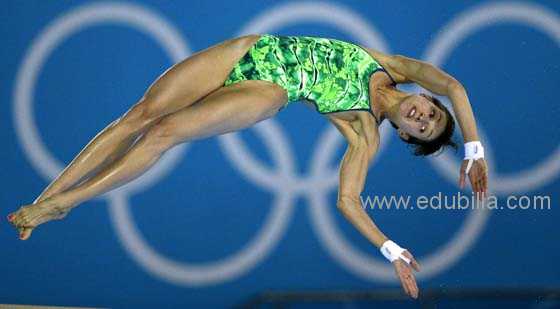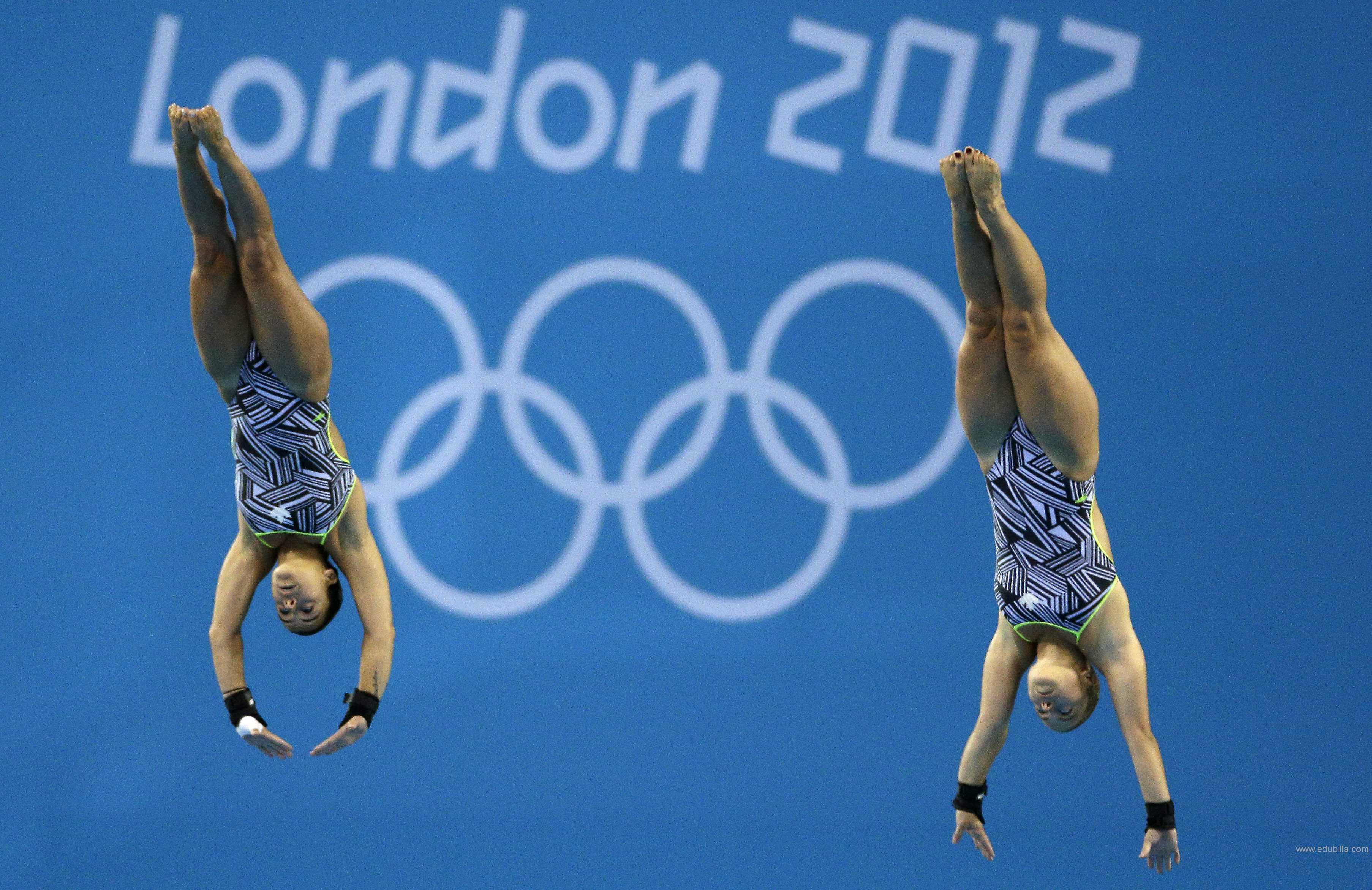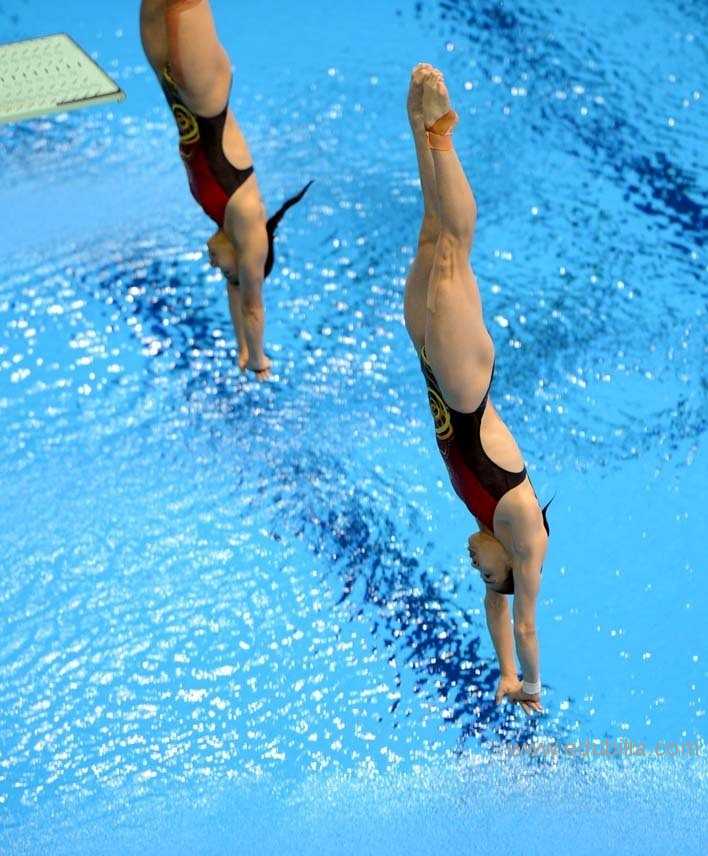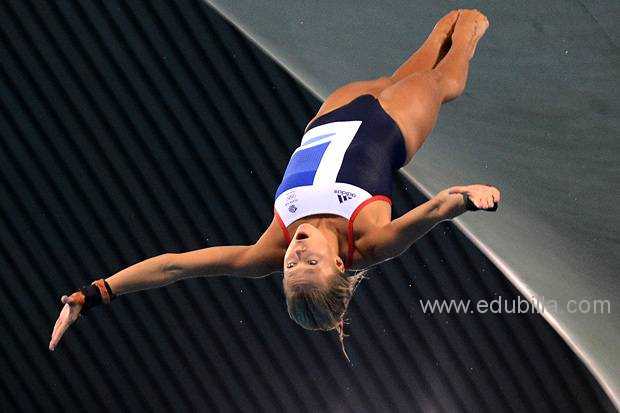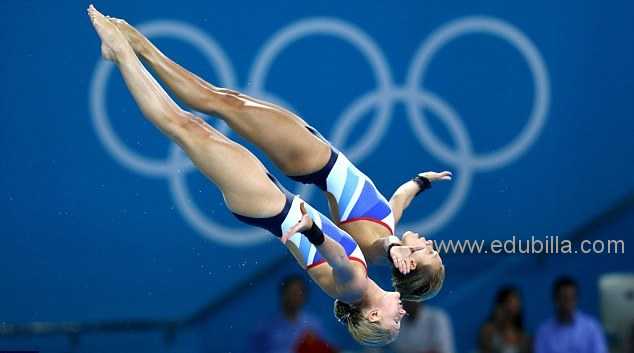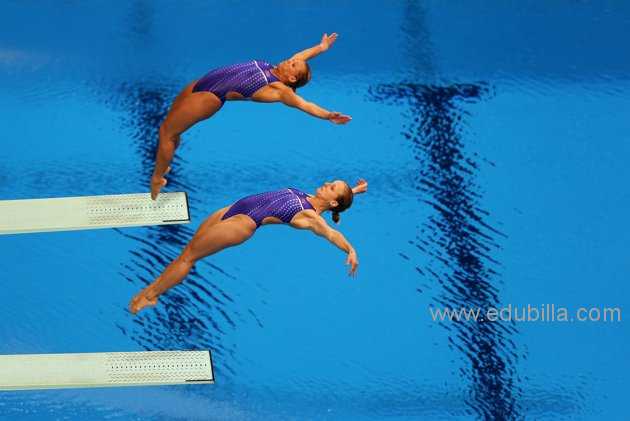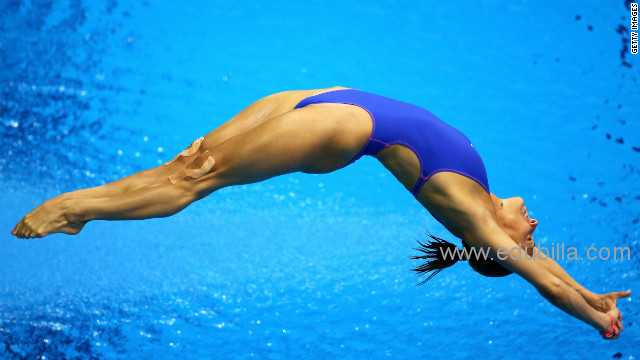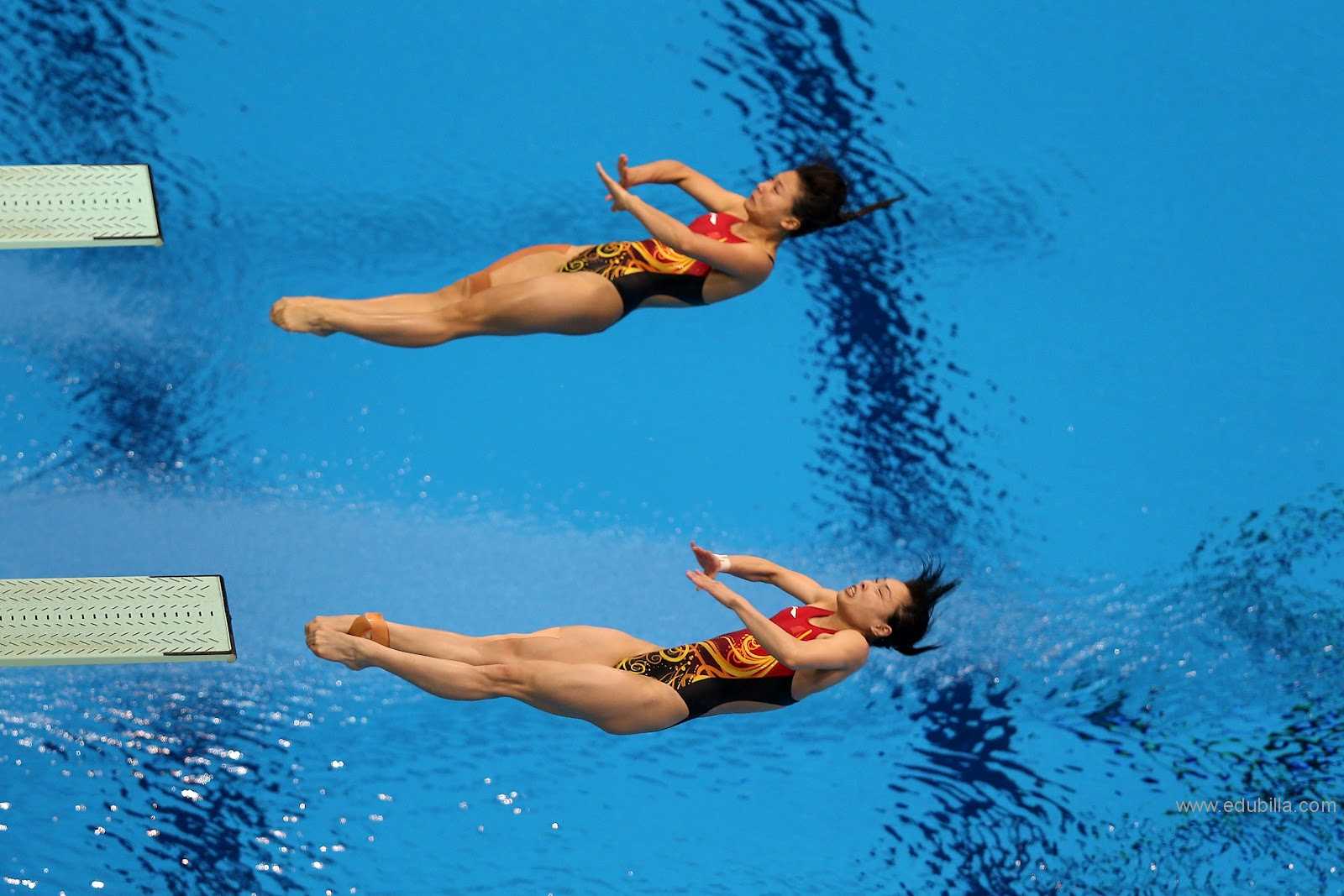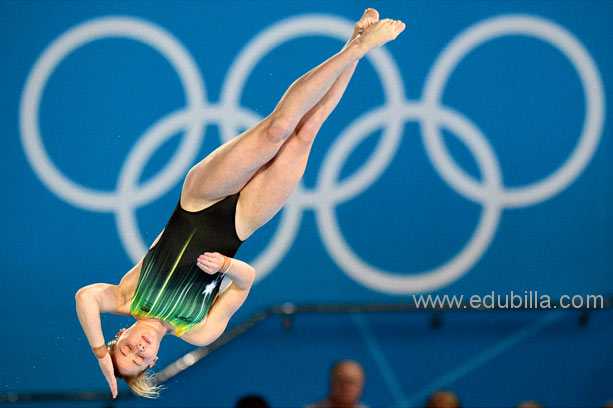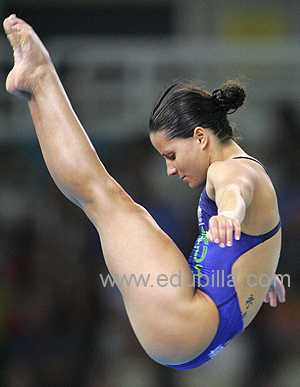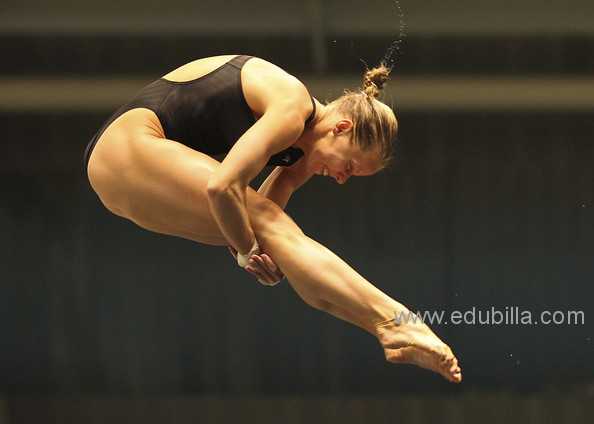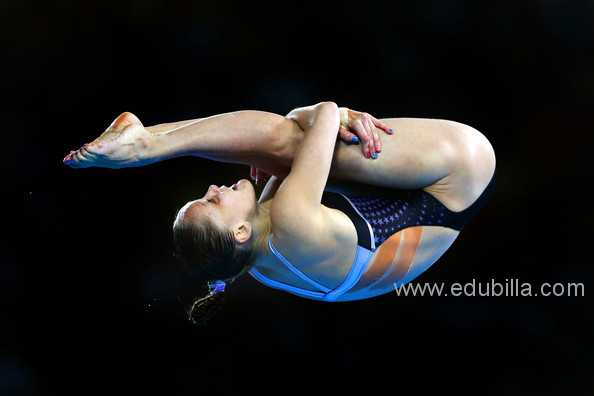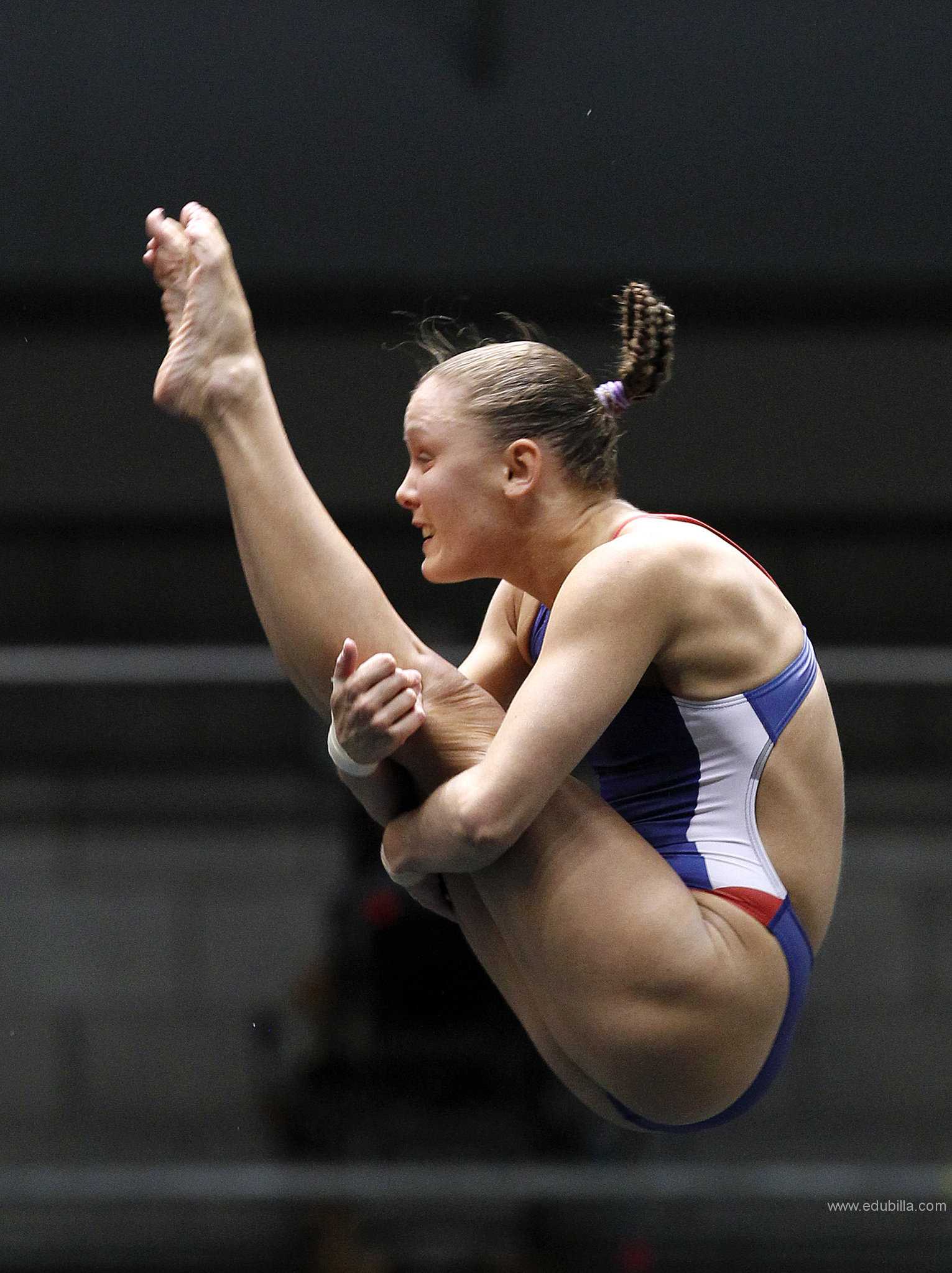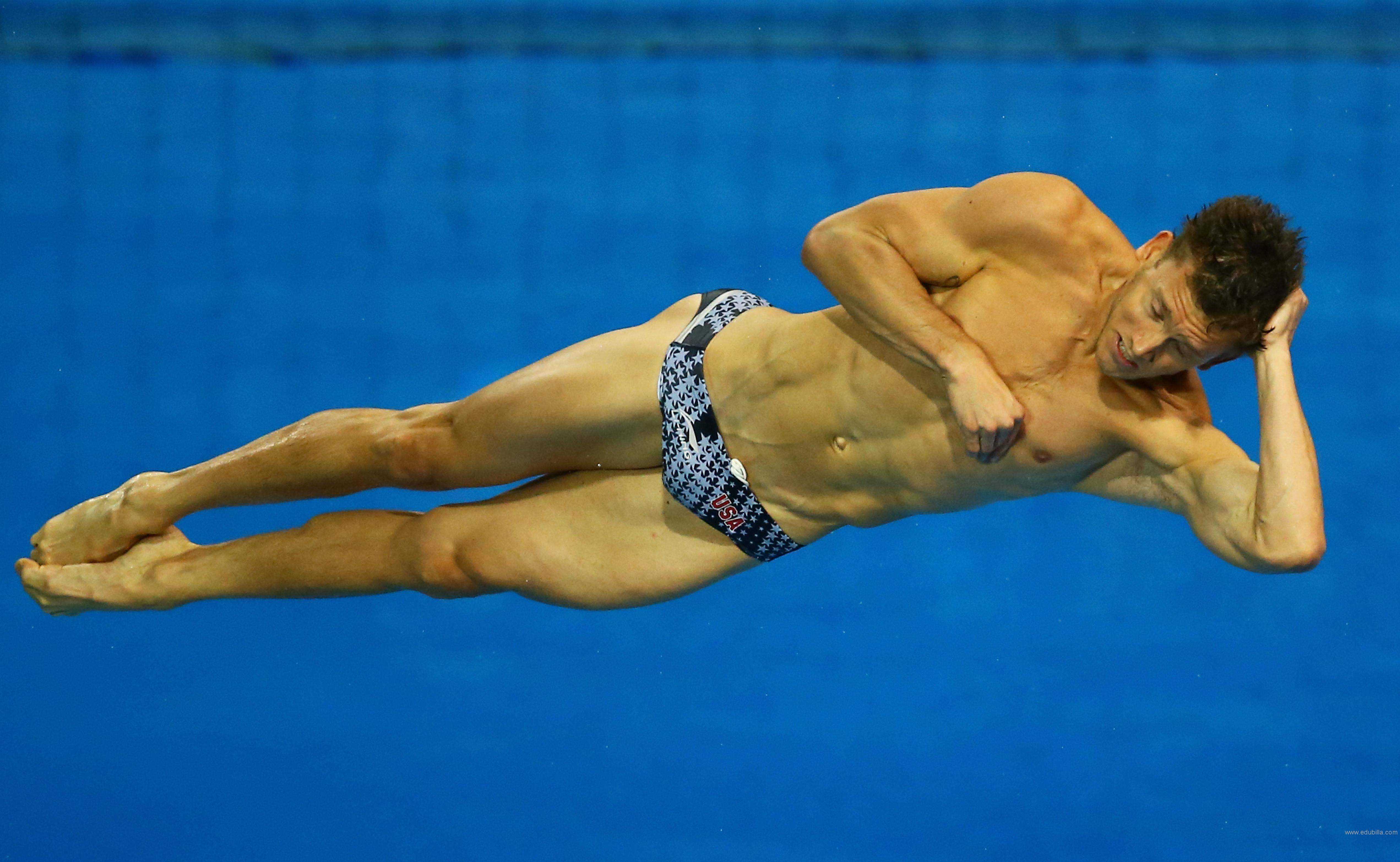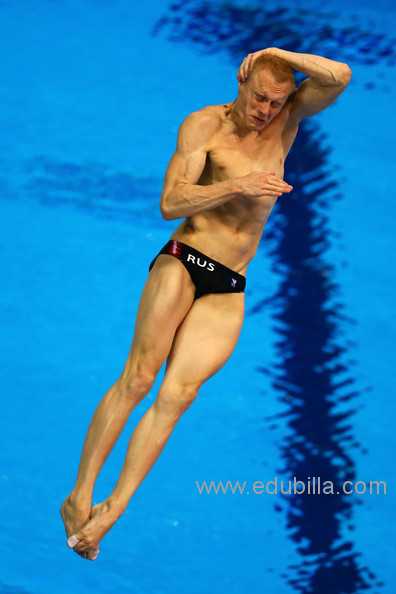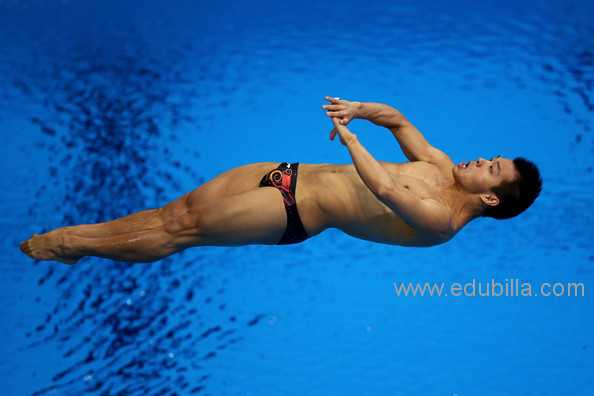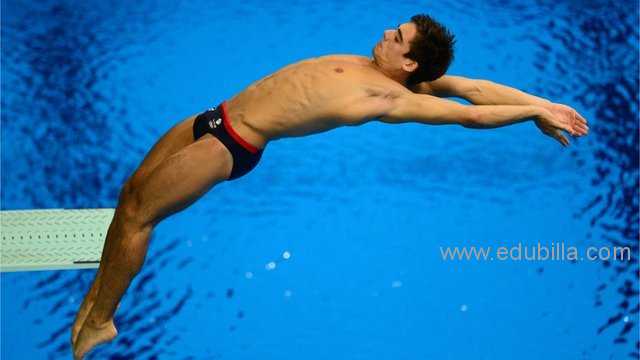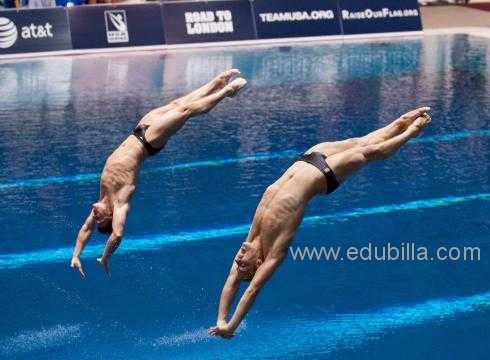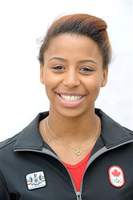
Overview Of Diving
Diving is the sport of jumping or falling into water from a platform or springboard, sometimes while performing acrobatics. Diving is an internationally recognized sport that is part of the Olympic Games. In addition, unstructured and non-competitive diving is a recreational pastime.
Diving is one of the most popular Olympic sports with spectators. Competitors possess many of the same characteristics as gymnasts and dancers, including strength, flexibility, kinaesthetic judgment and air awareness. Some professional divers were originally gymnasts or dancers as both the sports have similar characteristics to diving.
Game Rules
The rules used for judging and scoring an Olympic diving contest are dictated by FINA, the international governing body for the aquatics and the body that oversees the sport of diving. Listed here many of the more important rules that will govern the diving competition during the Olympic Games. So that when you are on the edge of you seat and the announcer is screaming about the Chinese diver's takeoff, you can explain to your friend why they received a 4 1/2 instead of an 8.
Requirements:
Springboard Diving
-All springboard diving in the Olympic Games is contested from the 3-meter springboard.
-Men must complete six dives.
-Women must complete five dives.
-There is no limit on the total degree of difficulty for these dives.
-At least one dive during the contest must come from each of five different categories – forward, back, reverse, inward, and twisting.
-Men may repeat one of the categories for their sixth dive, women may not.
-No dive can be repeated in a list of dives.
-The sixth optional dive for the men may be chosen from any of the categories.
Platform Diving:
-Men must complete six dives.
-Women must complete five dives.
-There is no limit on total degree of difficulty for these dives.
-For the men, at least one dive during the contest must come from each of five different six different categories – forward, back, reverse, inward, twisting and armstand.
-No category can be repeated in a list of dives.
-All dives must be competed from the 10-meter platform.
Synchronized Springboard and Platform Diving:
-Women must complete five dives.
-Men must complete six dives.
-The first two dives for both the men and women are assigned a degree of difficulty of 2.0.
-The remaining three dives for the women and four dives for the men have no limit on the degree of difficulty.
-Both men and women must compete dives that come from at least four different categories, with at least one dive facing forward and that dive cannot be performed from a standing position on the springboard.
-Within the men’s six dives, a category cannot be used more than twice.
Judging:
A judge in a diving contest shall award from 0 to 10 points for a dive according to his or her overall impression using the following criteria:
- 10: Excellent
- 8½ - 9½: Very good
- 7 - 8: Good
- 5 - 6½: Satisfactory
- 2½ - 4½: Deficient
- ½ - 2: Unsatisfactory
- 0: Completely Failed
When judging a dive, the judge must not be influenced by any factor other than the technique and execution of the dive. The dive must be considered without regard to the approach to the starting position, the difficulty of the dive, or any movement beneath the surface of the water.
The following elements must be considered with equal importance by judge before awarding a score:
- the starting position and the approach
- the take-off
- the flight
- the entry
Synchronized diving competition involves two competitors diving simultaneously from the springboards or platform. The competition is judged on how the two divers individually perform their dives, and how the two divers as a team synchronize their performance.
The factors to be considered when judging synchronized diving are:
- the starting position, the approach and the take-off, including the similarity of the height
- the coordinated timing of the movements during the flight
- the similarity of the angles of the entries
- the comparative distance from the springboard or platform of the entry
- the coordinated timing of the entries
Detailed Diving Rules Can Be Downloaded From Documents
Equipments Need For Diving
Pool:
The pool must be at least 5 metres deep.
Springboard:
A flexible diving board that can be adjusted to create more or less spring. It must be at least 4.8 metres long and a half-metre wide, with a non-slip surface.
Platform:
For platform, the board must be at least six metres long and two metres wide, with a non-slip surface. (For synchronised diving the platform must be three metres wide.).
History Of Diving
Diving has changed over the years and with it the very meaning of the word. At the beginning of the century a dive began the moment the water was touched. Now it means the process of leaping and springing into water.
Gymnastics Beginnings:
Diving became popular in Sweden and Germany in the 18th and 19th centuries. The sport was primarily practised by gymnasts who started performing tumbling routines into the water.
Popularity Spreads:
In the late 19th century a group of Swedish divers visited Great Britain. They put on diving displays that proved hugely popular and led to the formation of the first diving organisation, the Amateur Diving Association, in 1901.
Plunging:
Although diving has been a popular pastime across the world since ancient times, the first modern diving competitions were held in England in the 1880s. The exact origins of the sport are unclear, though it likely derives from the act of diving at the start of swimming races.The 1904 book Swimming by Ralph Thomas notes English reports of plunging records dating back to at least 1865. The 1877 edition to British Rural Sports by John Henry Walsh makes note of a "Mr. Young" plunging 56 feet in 1870, and also states that 25 years prior, a swimmer named Drake could cover 53 feet.
The English Amateur Swimming Association (at the time called the Swimming Association of Great Britain) first started a "plunging championship" in 1883.The Plunging Championship was discontinued in 1937.
Fancy Diving:
Diving into a body of water had also been a method used by gymnasts in Germany and Sweden since the early 19th century. The soft landing allowed for more elaborate gymnastic feats in midair as the jump could be made at a greater distance. This tradition evolved into 'fancy diving', while diving as a preliminary to swimming became known as 'Plain diving'.
In England, the practice of high diving – diving from a great height – gained popularity; the first diving stages were erected at the Highgate Ponds at a height of 15 feet in 1893 and the first world championship event, the National Graceful Diving Competition, was held there by the Royal Life Saving Society in 1895. The event consisted of standing and running dives from either 15 or 30 feet.
It was at this event that the Swedish tradition of fancy diving was introduced to the sport by the athletes Otto Hagborg and C F Mauritzi. They demonstrated their acrobatic techniques from the 10m diving board at Highgate Pond and stimulated the establishment of the Amateur Diving Association in 1901, the first organization devoted to diving in the world (later amalgamated with the Amateur Swimming Association). Fancy diving was formally introduced into the championship in 1903.
Olympic era:
Plain diving was first introduced into the Olympics at the 1904 event. The 1908 Olympics in London added 'fancy diving' and introduced elastic boards rather than fixed platforms. Women were first allowed to participate in the diving events for the 1912 Olympics in Stockholm.
In the 1928 Olympics, 'plain' and 'fancy' diving was amalgamated into one event – 'Highboard Diving'. The diving event was first held indoors in the Empire Pool for the 1934 British Empire Games and 1948 Summer Olympics in London.
The History of Diving at a Glance:
1890:In the late 1890s Otto Hagborg and C F Mauritzi came to London and introduced fancy diving, which was being developed in Sweden. Pioneers such as Sir Claude Champion de Crispigny took it up and as a direct result the Amateur Diving Association was formed in 1901.
1895:High diving became popular amongst a small circle of enthusiasts, and in 1895 the National Graceful Diving Competition was instituted. It was open to the world and the tests were standing and running dives from 15 and 30feet.
1889:The first recorded championship in the UK was the Championships of Scotland held in 1889. During this the action comprised a dive from the side of the bath, a dive from about six feet, and a surface dive.
1903-1906:Fancy dives were included for the first time in competition in 1903. There was a springboard event in the 1904 Olympic Games and High Diving was also numbered amongst the sports in the supplementary Olympic Games in Athens in 1906.
1906-1908:G. Melville Clark represented Great Britain in the latter event in 1906, and around this time tariff values were introduced. By the Olympic Games in London in 1908, tables had been drawn up and were used at the event.
1912-1920:Women's diving was included in the Olympic Games for the first time in 1912. It was a simple diving contest from the high board. Miss Belle White gained third place for Great Britain. The first women’s springboard competition took place in 1920.
1928:Plain and fancy diving from the high board for women was not introduced into the Olympic Games until 1928. During the same year the two men's highboard events - one plain and the other fancy - were amalgamated into one competition.
1924-1928:By the 1924 Olympic Games the springboard diving tariff was very complex. There were six methods of performing each dive - standing, running, taking off with one foot, running taking off with two feet and in each case the entry could be made with or without hands.
After 1924 the tariff was simplified and began to assume the form we know today. The 1928 Olympic Games events were confined to compulsory and voluntary dives.
1935-1936:For over 30 years the Amateur Diving Association held its own championships and looked after the interests of divers. In 1935 it was wound up as a separate organisation and merged with the ASA.
Since 1936 the ASA has been responsible for championships and other matters concerning diving and in order to deal competently with items affecting diving the ASA has a Diving Committee comprising people who are established authorities on the subject.
Origin Of Diving
Diving as a sport in the modern era had its origins in Germany and Scandinavia in the 18th and 19th Centuries, but the thrill of hurling yourself from a height head-first into water is age-old. Even if Noah never hazarded a plunge into the Flood from the Biblical Ark, the joy of diving can be traced back to Antiquity. The “Tomba del Tuffatore” – “Tomb of the Diver” – dating back to 480 BC was discovered in Paestum in southern Italy and shows a young man plunging in graceful flight after taking off from a high platform. The image is thought to symbolise the passage of life to death.
18th Century:
Diving as a competitive sport developed after gymnasts in Germany and Sweden began to practise their routines over water from the 18th Century. Diving and swimming had been traditional activities of a guild of salt boilers in the German town of Halle known as “Halloren”. They practised their diving feats from a bridge over the River Saale and showed off their skills at festivals.
First Diving Association:
One of their foremost divers, named Tichy, was instrumental in forming the first diving association in 1840 with links to the German gymnastics movement. They were known as “Tichy’sche Froesche” (Tichy’s Frogs), and most members were gymnasts.
First Book on Diving:
The first known book on diving was published in Germany in 1843. The oldest German club, Der Berliner Schwimmverein von 1878, was known as Neptun and started international diving contests in 1882.
Early Original Rules:
The first diving rules were adopted in 1891. The International Olympic Committee traces the start of competitive diving to Britain at much the same time as in Germany. Swedish divers gave exhibitions there, stimulating the formation of the Amateur Diving Association of England in 1901. At around the turn of the 20th Century, enthusiasts were leaping into the water from bridges in the United States, though the activity was discouraged because of bad accidents.
First Diving Apparatus:
The first diving apparatus is credited to an Egyptian named Ahsan-ul-Ghawasin, also known as Issa. He served in the navy of the Turkish Sultan Saladin during the third Crusade. As a means of getting supplies through to the city of Acre, he supposedly constructed a device made from a bellows. Weighted by a heavy stone, the device let him remain submerged just below the surface and swim past the Christian sentries. The record contains colorful accounts of Issa’s horror at witnessing the hundreds of Arab bodies strewn on the sea floor “serving as a feast for eels, octopus and crabs.” He, too, became one of those bodies after he was spotted by a Crusader patrol and shot dead by an arrow.
Hydrostatergatic Machine:
Europe. In 1771, a Frenchman named Freminet produced what he called the “hydrostatergatic machine.” It consisted of a brass helmet with eyeholes. The air was supplied by a bellows into a small air reservoir, then pumped down to the diver. But because of the minimal air delivery capability, Freminet’s device was of limited use. In 1786, John and William Braithwaite developed an improved version of the helmet, as did a German named Klingert in 1787. Still, the advances in diving technology of 17th and 18th century came from improvements in diving bells rather than helmets.
Governing Bodies
FINA:
International Swimming Federation(FINA) is the International Federation (IF) recognized by the International Olympic Committee (IOC) for administering international competition in Aquatics. It is one of several IFs which administer a given sport/discipline for the IOC and/or international community. It is based in Lausanne, Switzerland.
FINA currently oversees competition in five aquatics sports: swimming, diving, synchronized swimming, water polo and open water swimming. Beginning in 2013, high diving is an emerging discipline within FINA. FINA also oversees "Masters" competition (for adults) in its disciplines.
On July 24, 2009, Julio Maglione of Uruguay was elected FINA President.
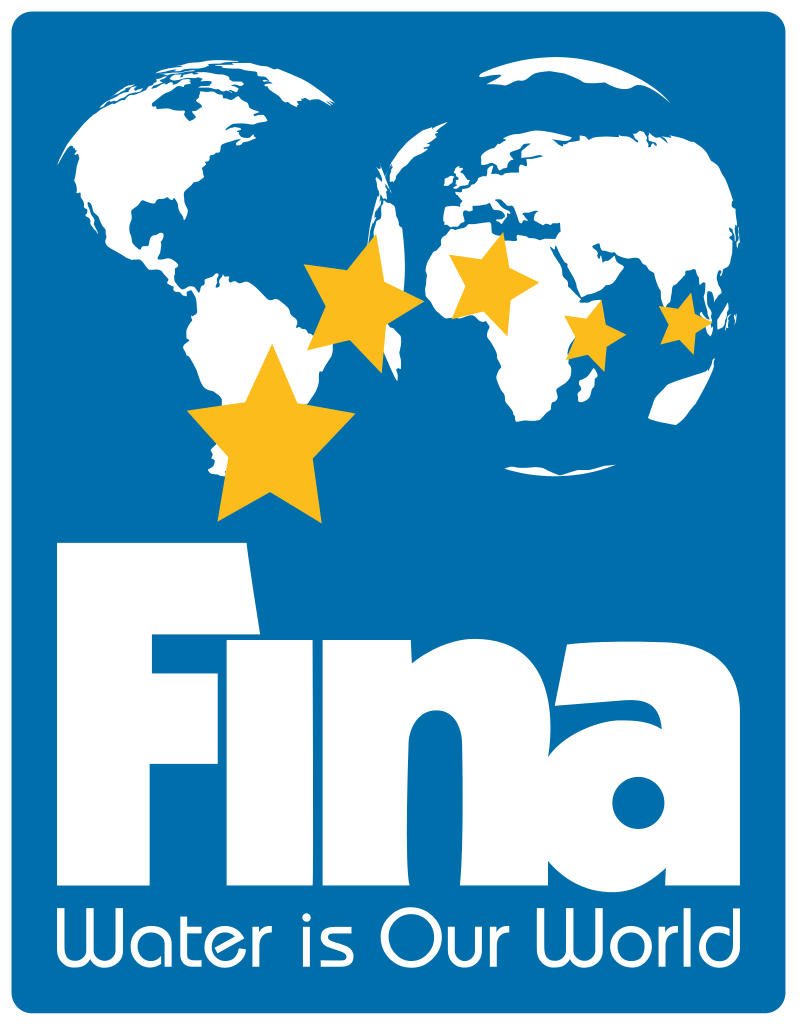
History:
FINA was founded on July 19, 1908 in the Manchester Hotel in London, UK at the end of the 1908 Summer Olympics by the Belgian, British, Danish, Finnish, French, German, Hungarian and Swedish Swimming Federations.
Number of national federations by year:
-1908: 8
-1928: 38
-1958: 75
-1978: 106
-1988: 109
-2000: 174
-2008: 197
-2010: 202
-2012: 203
Organization:
The FINA membership meets every four years, usually coinciding with the World Championships. There are two types of normal or "ordinary" congress: General and Technical. FINA’s highest authority is the General Congress. Any technical issues concerning FINA’s five aquatic disciplines are decided by the Technical Congress. Each Congress has two voting members from each Member federation, plus the following non-voting members: the 22 members of the Bureau, the Honorary Life President, and all Honorary Members. The Technical Congress has the following additional non-voting members: all members from the respective Technical Committees. "Extraordinary" Congress are also called from time to time, to deal with a specific topic or area of concern (e.g., an Extraordinary Congress was held with the 2009 World Championships to review the Masters swimming rules; there was a General Congress at the 2009 Worlds). All Congress meetings are chaired by FINA's president.
Events:
FINA organizes one championship involving each of the five disciplines it oversees (the "World Championships"), as well championships and circuits in each of the disciplines.
World Championships:
The biggest FINA event is the biennial World Championships, currently held every odd year. It features competitions in all five aquatic disciplines. Prior to 2000, the event was held every 4 years, in the even year between (Summer) Olympic Games.
Discipline championships:
-Swimming: World Swimming Championships (25m), (aka "Short Course Worlds"). Bi-annual event (in even years), swum in 25-meter length pool (Olympic and World Championships are in a 50m pool).
-Water Polo: Water Polo World Leagues (men's and women's).
-Diving: Diving World Series
-Open Water: World Open Water Swimming Championships (aka "Open Water Worlds"). Even years from 2000-2010.
-Synchronized Swimming: Synchro World Cup.
-Masters: World Masters Championships (aka "Masters Worlds"). Bi-annual, in even years. "Masters" competition is for adults (20 years old and up). This championships features all 5 disciplines.
Other events:
In addition to the championships events listed above, FINA also organizes the following annual events, and sub-championships:
World Cups: in swimming, water polo (men's, women's), diving, high diving, open water (10Ks) and synchro.
Grand Prix: Annual race/competition series of multiple events in open water (races over 10-kilometers).
Junior Worlds: A world-level championships restricted to a younger age population (typically under-18, though can vary by discipline/gender). Held in swimming, water polo, diving, and synchronized swimming. Open Water is to begin in 2012.
World Men's Water Polo Development Trophy
Awards Related To Diving
ASA Kellogg’s Diving Awards:
WFDC adopt the Kellogg’s ASA Awards Scheme, training divers through beginner, intermediate and advance stages of diving.
The scheme progresses divers from the initial diving positions, structuring divers safely and naturally into the more advanced dives and also ensure regular assessment of the divers’ progresion by the club coaches. The scheme improves confidence and Certification Awards establishes each level of achievement earned by divers.
James E. Sullivan Award:
The James E. Sullivan Award, presented by the American Amateur Athletic Union (AAU), is awarded annually in April to "the outstanding amateur athlete in the United States".Often referred to as the Oscar of sports awards,it was first presented in 1930. The award is named for the AAU's founder and past president, James Edward Sullivan. Based on the qualities of leadership, character, sportsmanship, and the ideals of amateurism, the AAU Sullivan Award "goes far beyond athletic accomplishments and honors those who have shown strong moral character".Finalists are selected from public nominations following a review by the AAU Sullivan Award Executive Committee.Approximately 10 semi-finalists are chosen,and the eventual winner is determined by votes from various members of the nationwide news media, former winners and AAU personnel.More recently, a proportion of the winner's vote has been determined by the general public.Recipients are eligible for subsequent awards, although this has yet to happen.
The inaugural winner of the award was golfer Bobby Jones, winner of 13 majors between 1923 and 1930.The first female recipient, in 1944, was swimmer Ann Curtis, who won more national AAU championships than any other woman,while the most recent winner is Football player John Urschel.The award has been presented to multiple recipients on only one occasion – in 1999, to twin sisters Coco and Kelly Miller.
Winners:
1953-Sammy Lee
1956-Pat McCormick
1984-Greg Louganis
FINA Athletes of the Year:
The FINA Athletes of the Year, awarded by Fédération Internationale de Natation (FINA) and FINA Aquatics World Magazine, are a set of awards given in five categories: swimming, diving, synchronized swimming, water polo and open water swimming. The award was inaugurated in 2010 also in 2012 and 2013.
Sample Documents Of Diving
-Sachin Tendulkar

